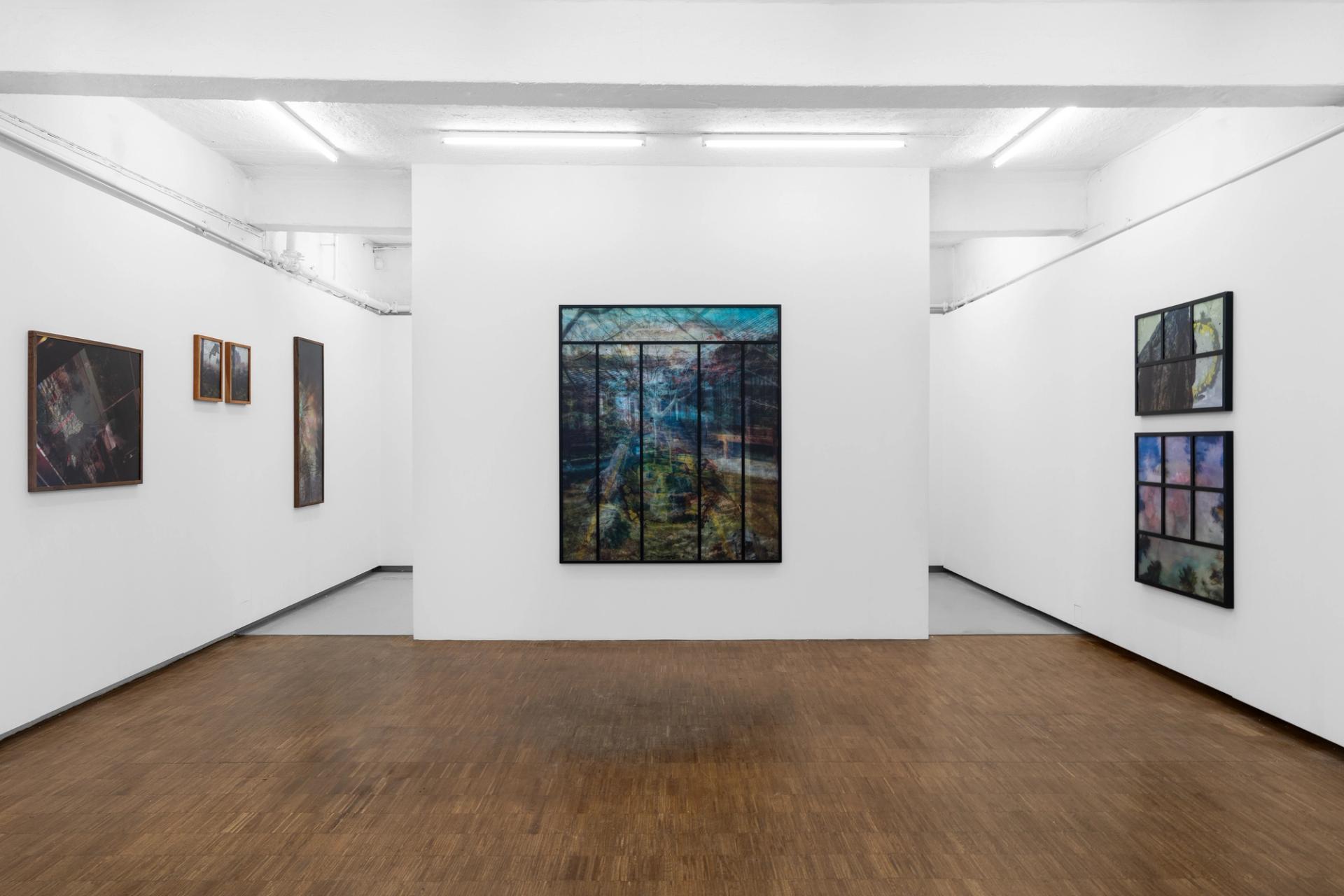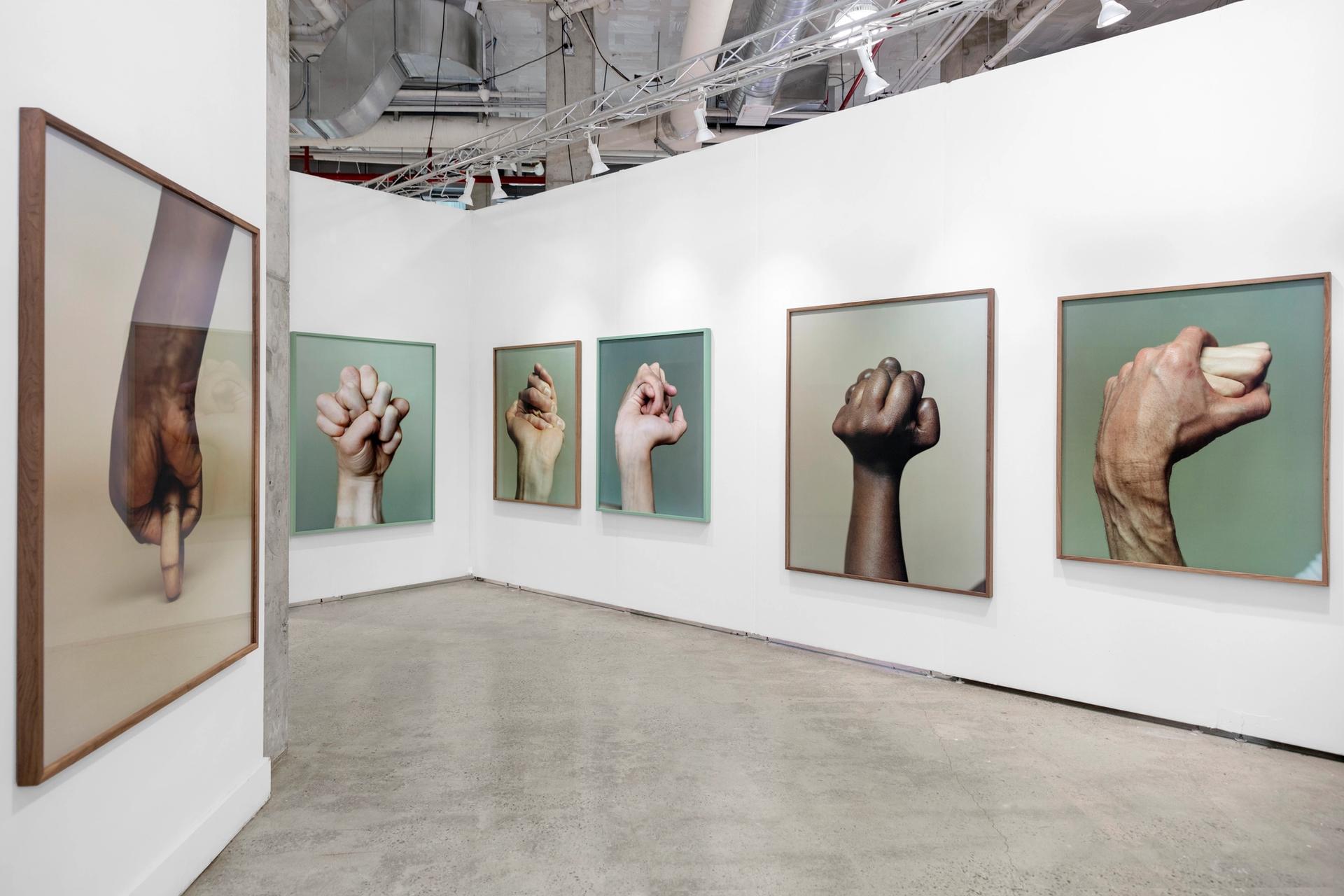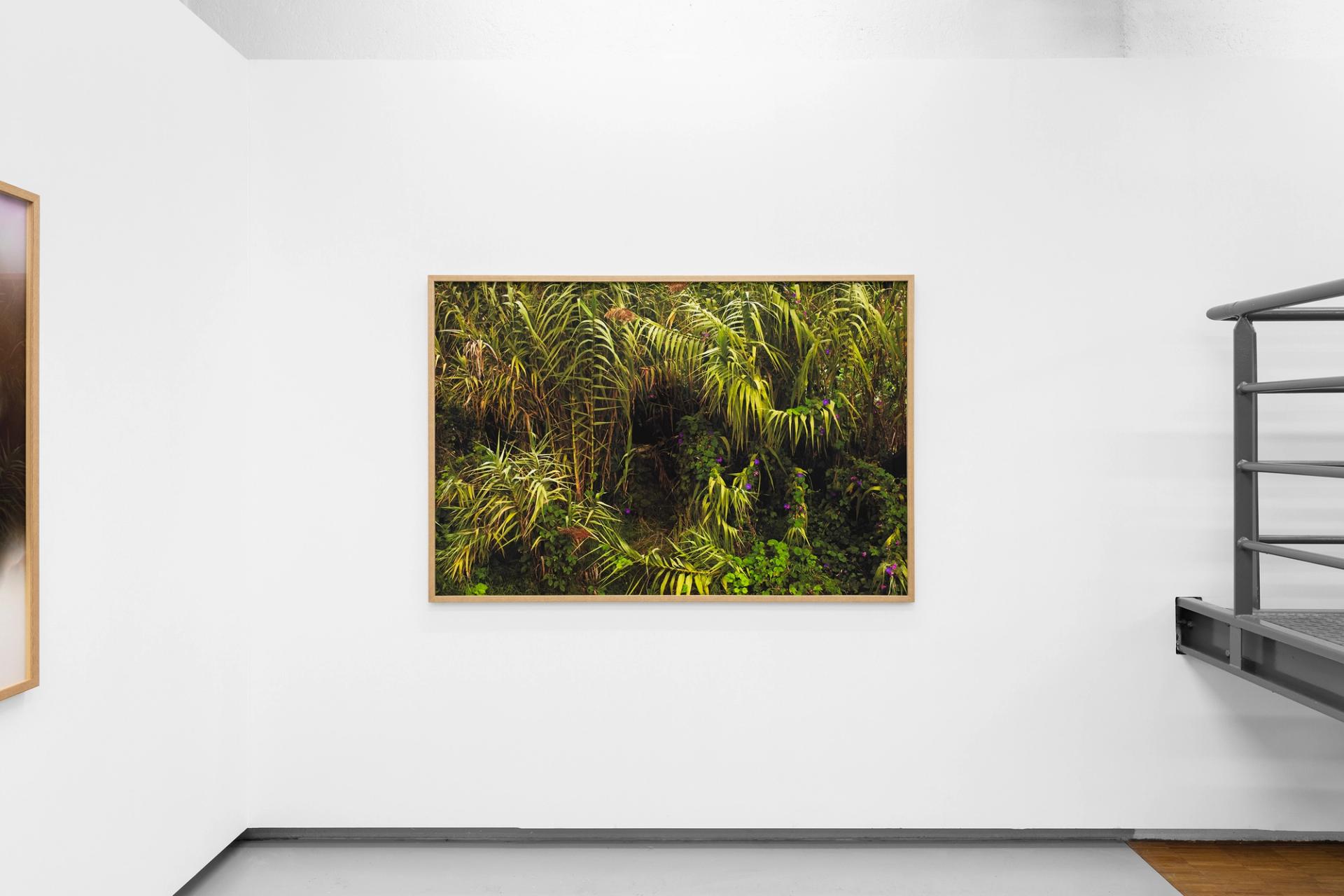
Kaya Wilkins
Also known as Okay Kaya. Kaya Wilkins is a Norwegian-American musician, composer, and artist from New Jersey and Nesodden. She expresses non-dualistic concepts, youth culture, and identities through her works. Her video works have previously been shown at K4 gallery in Oslo, and her photographs have been published by Office magazine, NYC. Synthesis at MELK will be her Norwegian debut, exhibiting photographic works.
Admir Batlak
Batlak has a background from Bosnia and Herzegovina. He works with textiles, sculpture and clothes. Central to his work is experimentation with craft and the development of new textiles. Through a multitude of references to fashion, history, social movements, and mainstream culture, he creates complex expressions that observe the present, exploring questions about taste, ideals and identity. He has previously shown at Galleri Riis, acquired by National Museum and won Norske Kunstforeningers debutantpris at Høstutstillingen. He lives and works in Oslo.
Simona Barbera
Simona Barbera’s practice spans from sound, sculpture, installation, to a variety of mediums. By exploring the sensibilities of urban spaces under changes and pressures, most of her work stems from the acoustic environment developing into abstract sonic textures of layered forms. She uses fragments of poetry in her work and investigates the relationship between the recorded voice, the body, and a variety of sculptural materials related to her immediate surroundings.
Her works have previously been shown at Lydgalleriet and The 54th Venice Biennale, amongst many other spaces. Since 2019 she has been co-running with Ronny Faber Dahl the online digital format ISG and since 2012 the artist-run space 4235. Barbera is based between Moss and Genova.
Farhad Kalantary
Kalantary is a Norwegian visual artist and curator with an Iranian/American background. He works with film and video installations, sculptures and art projects in public space. Kalantary works primarily in a non-narrative context combining the autobiographical approach with an investigation of formal and historical aspects of his media. His film and video works are concerned with the poetics of everyday life as they explore the potentiality of the moving image and the relationship of sound and image.
Kalantary’s works have been shown widely around the country and abroad and they are part of the collections of Moderna museum, Oslo kommune and KORO – Public Art Norway. Kalantary also works as an organizer and he was the co-founder and artistic leader of the artist initiative Atopia: film-video kunst (2003-17) in Oslo. He lives and works in Nesodden.
Nina Skarsbø
Skarsbø works primarily with sculpture/installation and painting, thematically connecting her work to the cross point of humanity and nature. The works and process of creation have often references to scientific phenomena and architectural structures. Her works also reflect how we as humans, look upon materials, and the deceiving nature of surface, and have previously been shown at Kösk and galleries in China, Norway, and Denmark. Nina lives and works in Oslo.
Mary N. Hasavari
Hasavari has Thai, Iranian and Norwegian background and explores non-dualistic manifestations in spirituality, psychology, society, and popular culture. Her works usually revolve around narratives. The Tower is part one of a trilogy that follows the first poet in the world – Enheduanna, and her existence within parallel universes where she embodies an oracle, a high priestess, and a tower. The three films are all made from the same material (footage). Hasavari explores how something can be the same, and particular – at the same time.
Her films have been screened at film festivals all over the world which has earned her five nominations at five different film festivals, among them, Oscar-qualifying Bogota Short Film Festival. She received honorable mention at The Isle of Wight International Film Festival and won International Screenwriters associations´ prize for best screenplay. Mary is currently developing her feature debut as a director with support from the Norwegian Film Institute and a documentary/stage production with Karen Nikgol.
Karen Nikgol
Nikgol’s work ranges from different fields of aesthetics that relate to spiritual practices, combined with subcultural references. Investigating esotericism combined with the erotic, juxtaposing meaning with surrealism, working solo or in cooperation with actors and dancers where both his paintings and stage productions strive to create expressive, vital and contemporary imagery.
He has exhibited paintings and directed productions at galleries and theatre spaces, notably Ghetto Justice and Satyricon at Black Box Teater in Oslo. His future works include the documentary film and stage production Dhamma with Mary N. Hasavari. Nikgol was born in Teheran, grew up in Trondheim and is now living in Oslo.
Presenting SYNTHESIS at MELK
Kaya Wilkins / Admir Batlak / Simona Barbera / Nina Skarsbø / Farhad Kalantary / Mary N. Hasavari / Karen Nikgol
Curated by Mary N. Hasavari and Karen Nikgol
SYNTHESIS /ˈsɪnθɪsɪs/
I.
a. The combining of two elements unto a third and higher state.
b. The dialectic merging of thesis and antithesis unto a higher state of truth.
II. Adj. “I am synthesis”.
a. A multicultural person, also referred to as a “third culture kid”.
b. A person that embodies two or several contrasting cultural / ethnical / gender / religious etc. identities.
c. A person that has transcended former identity, and becomes what they always have been.
III.
a. A summary or connections of particularities that creates unity.
b. Production of a new matter, by the unification of connections, chemical elements or groups.
c. The combination of different opinions and terms unto coherence.
IV.
a. Deductive reasoning.




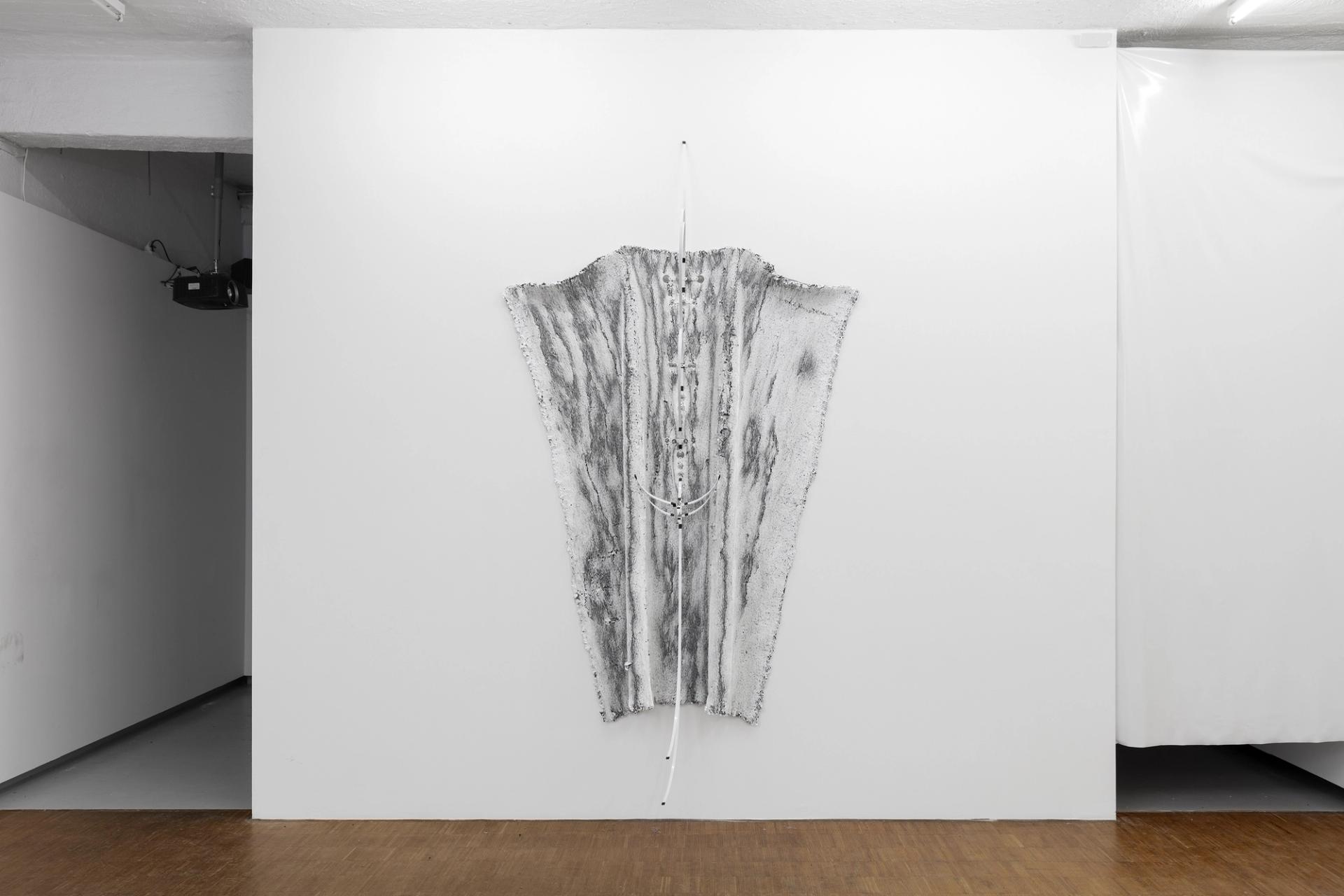




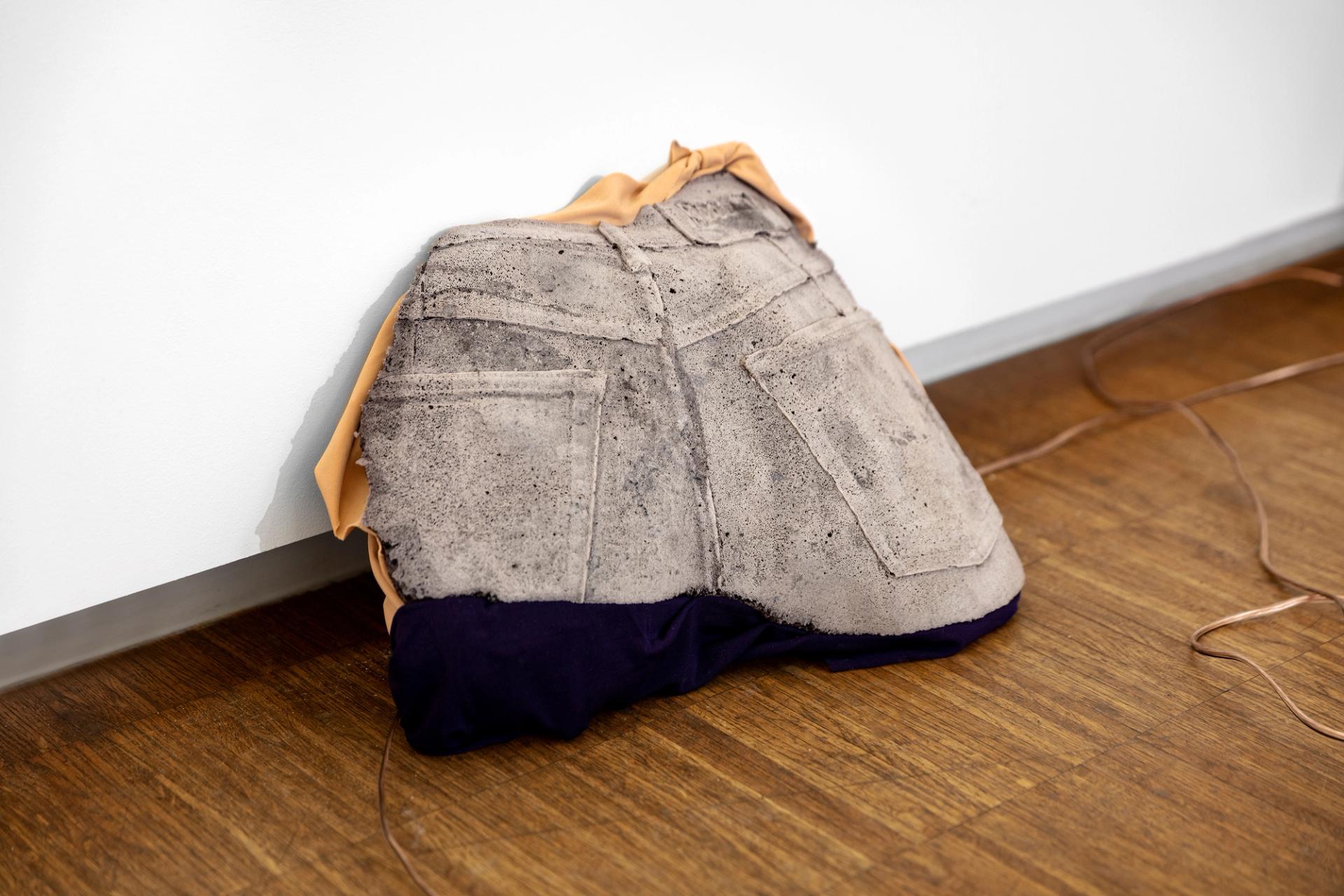
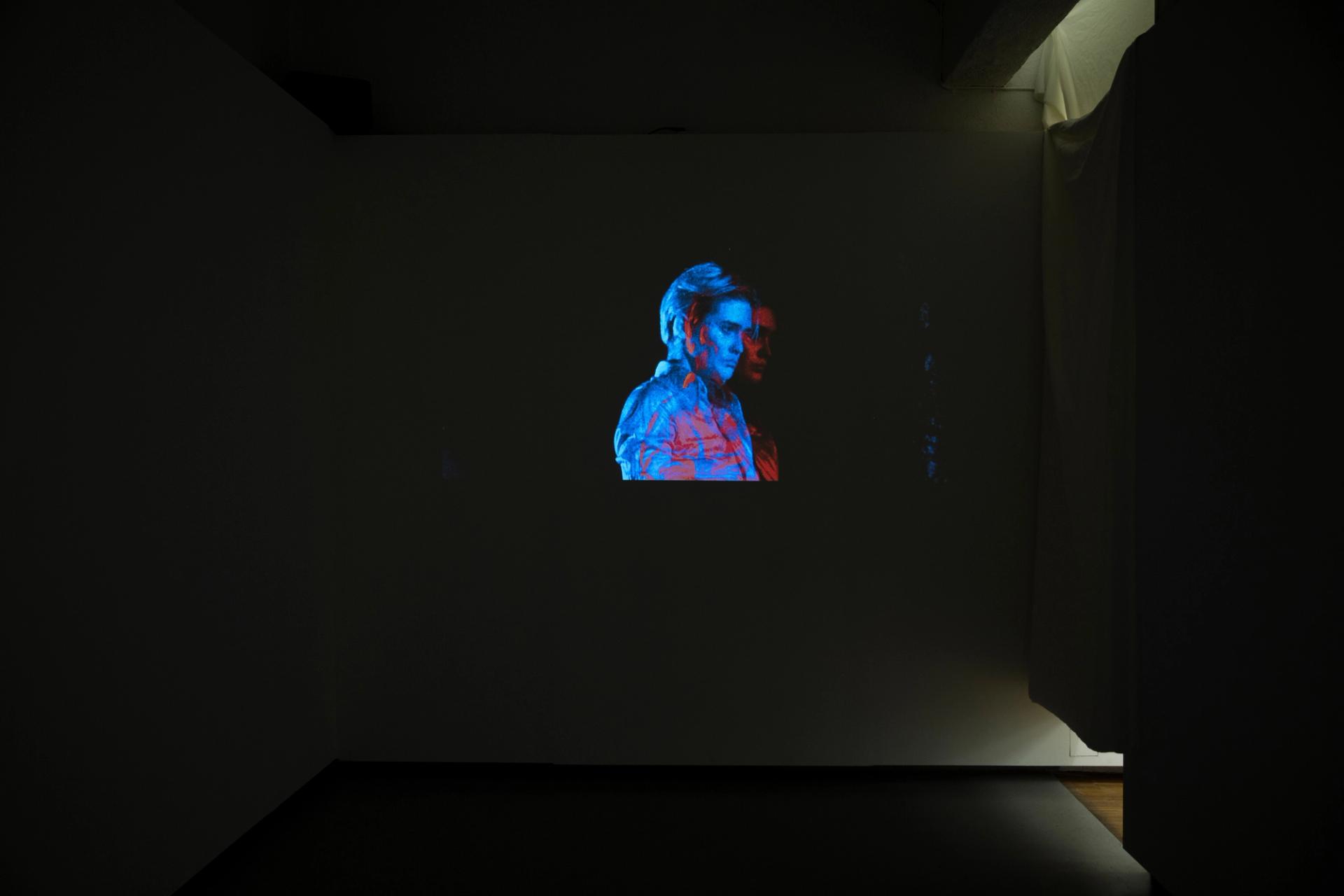
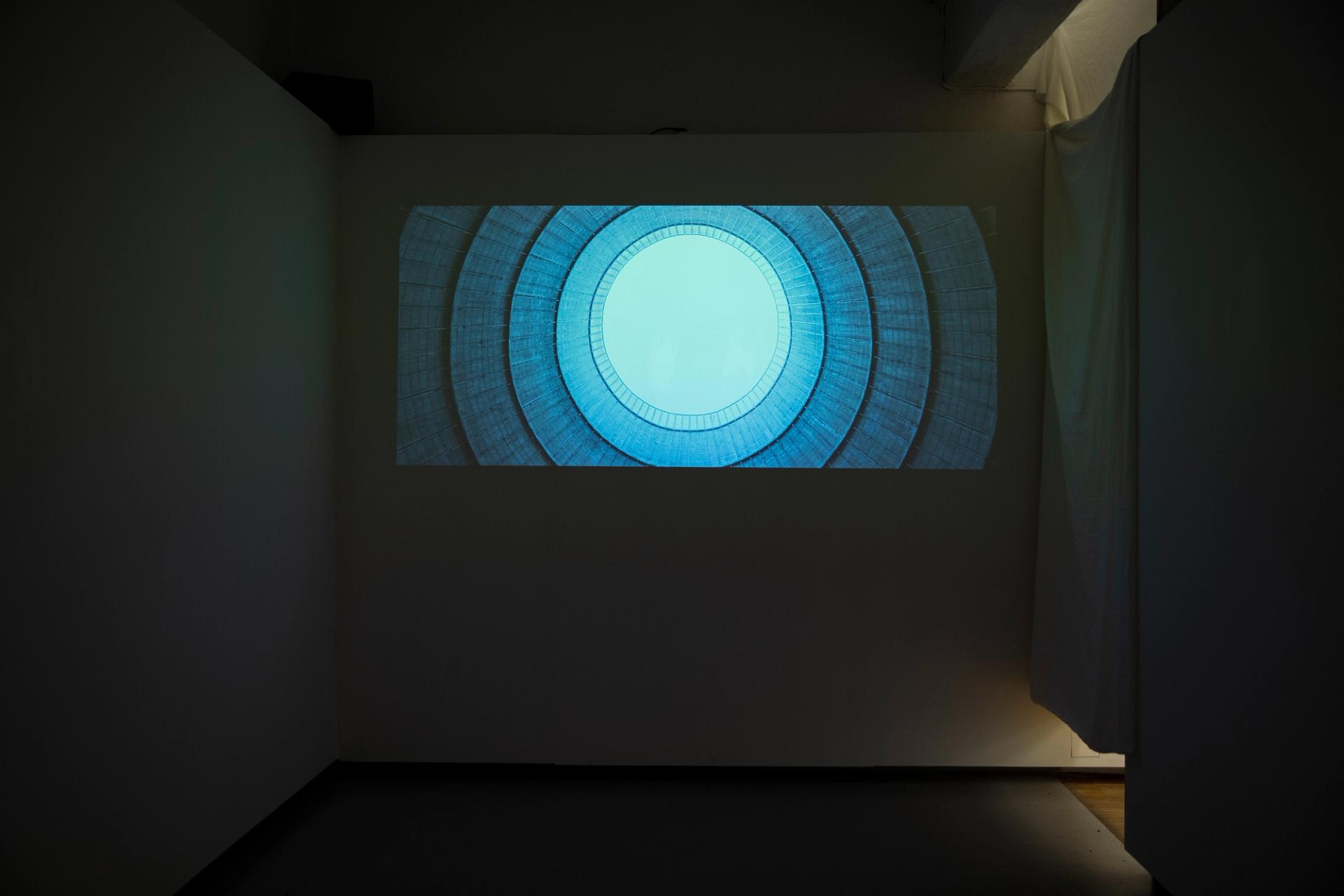




↓ Previous Shows
